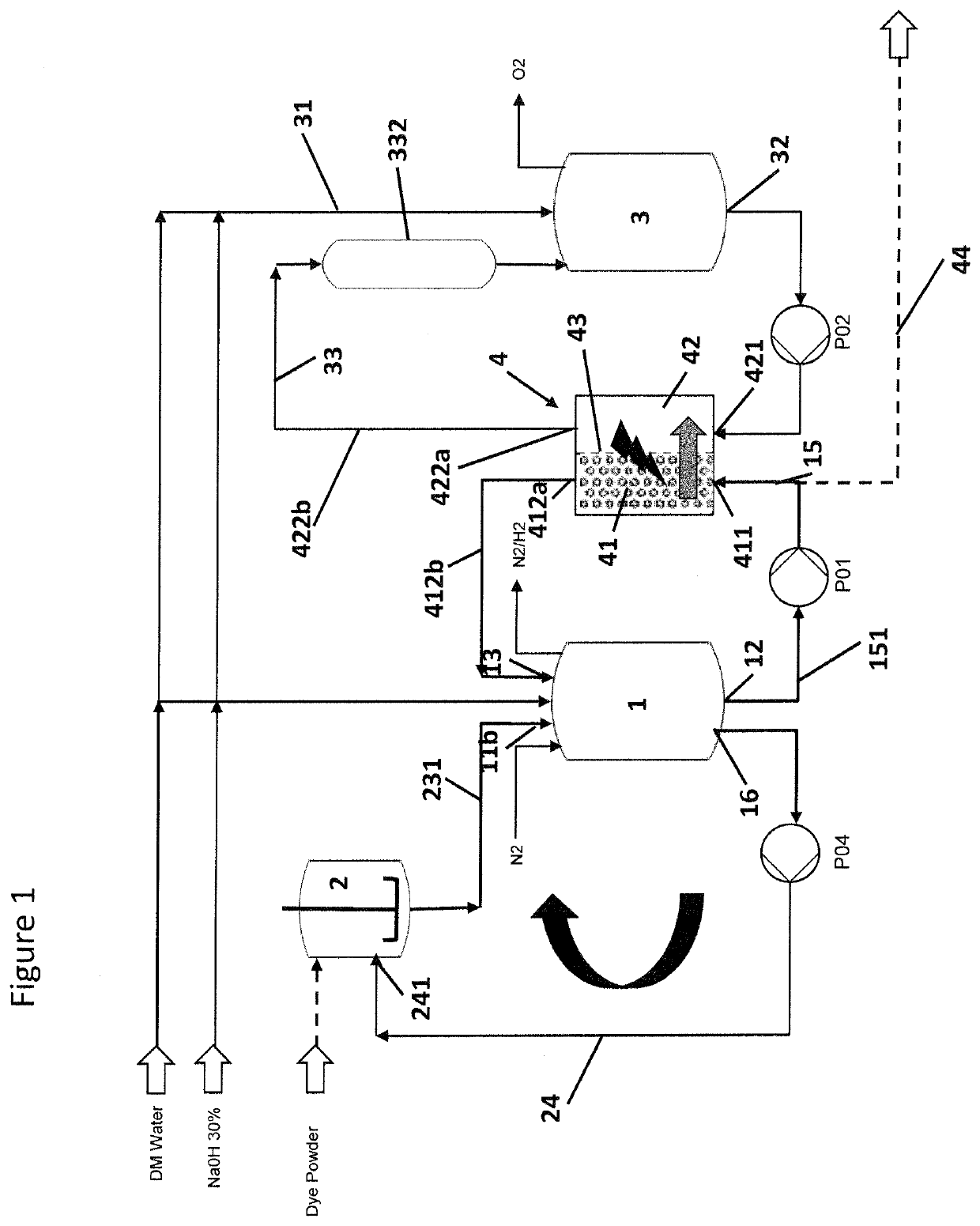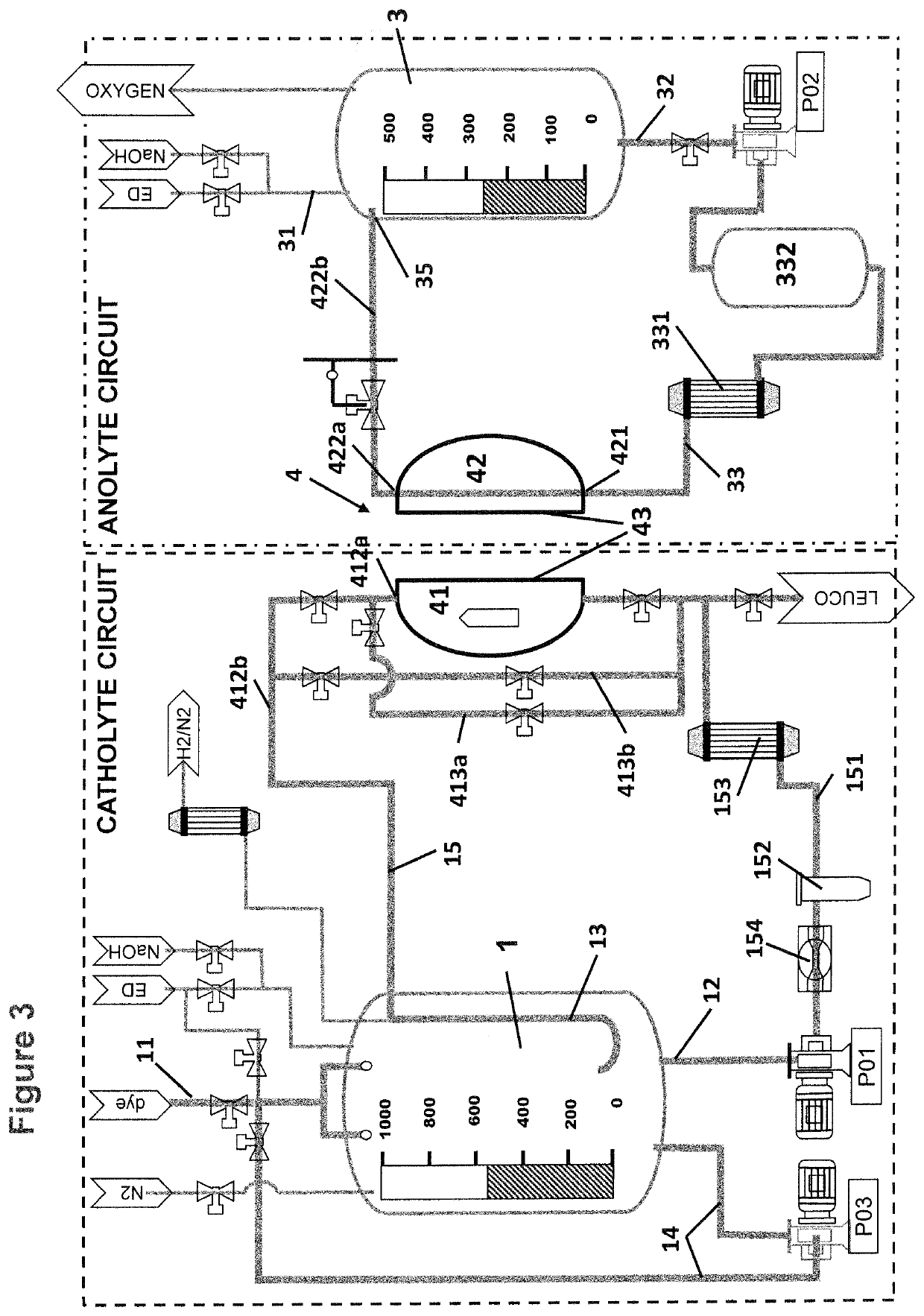By-products (impurity) removal
a technology of impurities and by-products, applied in the field of electrolysis, can solve the problems of decreasing performance upon use, and none of these documents deal with the removal of non-gaseous by-products or contaminants, and achieve the effect of improving performance and life, and longer intervals
- Summary
- Abstract
- Description
- Claims
- Application Information
AI Technical Summary
Benefits of technology
Problems solved by technology
Method used
Image
Examples
Embodiment Construction
[0062]The method will now be further illustrated for a dye reduction method, in particular an indigo reduction method.
[0063]FIG. 1 shows the basic equipment of an anolyte circuit with an electrolytic cell 4 comprising a cathode compartment 41 and an anode compartment 42 separated from each other by a separator 43, in particular a semipermeable membrane. The anolyte vessel 3 is fed with electrolyte, in particular caustic soda via anolyte supply pipe 31. From anolyte vessel 3 the anolyte is fed to the anode compartment 42 via anolyte outlet 32 into anolyte circulation loop or anolyte circulation pipe 33, respectively equipped with a anolyte circulation pump P02. The anolyte enters the anode compartment via anolyte inlet 421, passes through the anode compartment 42 and is returned from the anode compartment 42 via anolyte outlet 422a and anolyte return pipe 422b into the anolyte vessel 3. Also provided within the anolyte circulation loop is an adsorption filter 332 that can be placed a...
PUM
 Login to View More
Login to View More Abstract
Description
Claims
Application Information
 Login to View More
Login to View More - R&D
- Intellectual Property
- Life Sciences
- Materials
- Tech Scout
- Unparalleled Data Quality
- Higher Quality Content
- 60% Fewer Hallucinations
Browse by: Latest US Patents, China's latest patents, Technical Efficacy Thesaurus, Application Domain, Technology Topic, Popular Technical Reports.
© 2025 PatSnap. All rights reserved.Legal|Privacy policy|Modern Slavery Act Transparency Statement|Sitemap|About US| Contact US: help@patsnap.com



